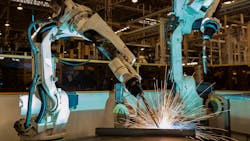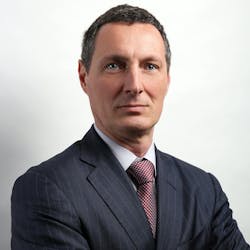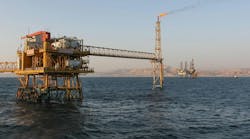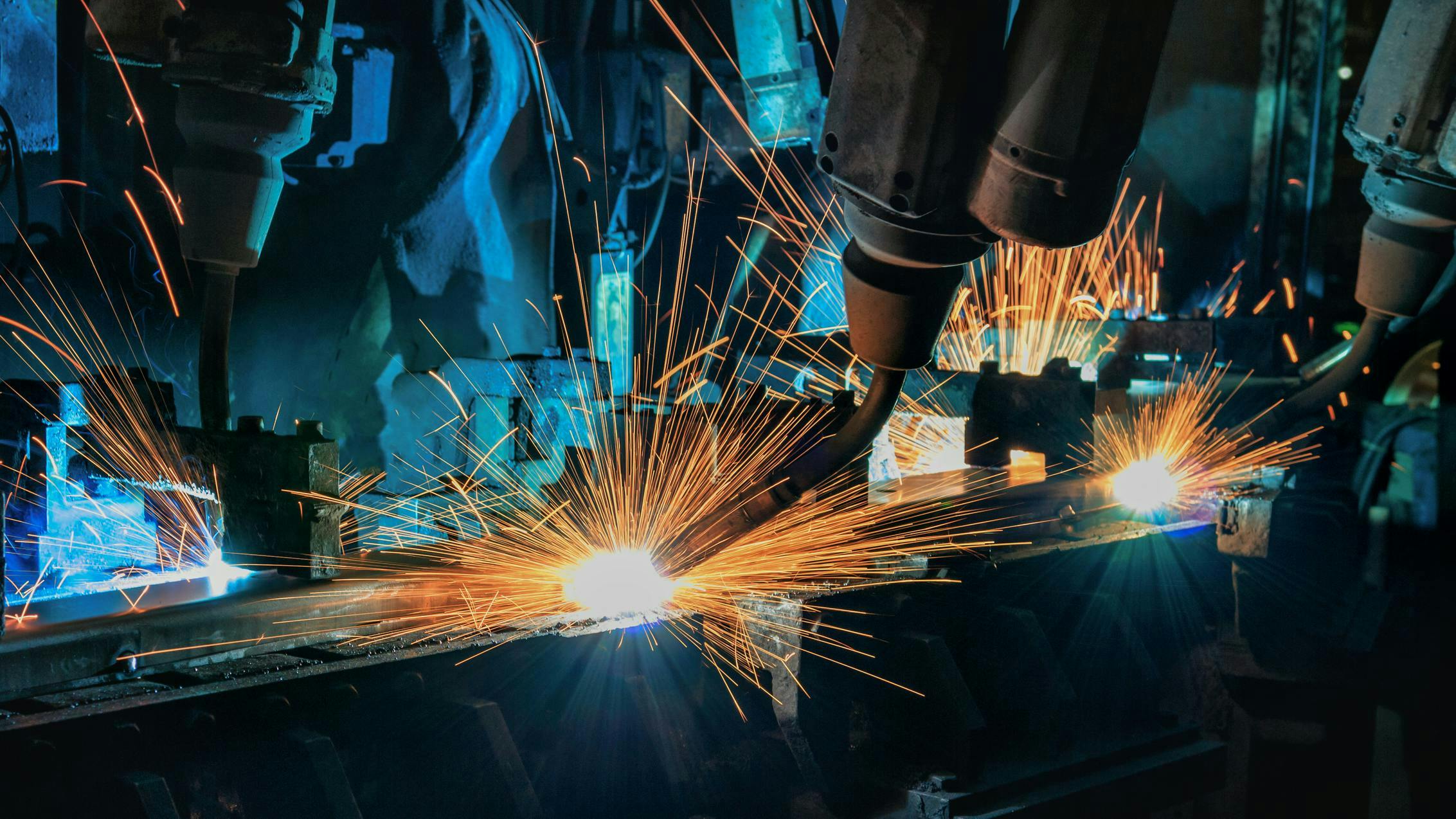ADIPEC 2025: CRC Evans CEO talks offshore welding for a digital future
Key Highlights
- CRC Evans is shifting from semi-automated to fully robotic welding processes driven by AI to improve precision and safety in offshore projects.
- Long-term partnerships and data-driven insights are key to successful large-scale offshore projects like Qatar’s LNG expansion and Saudi Aramco’s offshore programs.
- Future technologies such as autonomous robotic welding and AI-driven design will revolutionize offshore infrastructure, making projects safer, faster and more cost-effective.
By Ariana Hurtado, Editor-in-chief
As the global energy community gathers in Abu Dhabi this week for the ADIPEC Exhibition and Conference, Offshore chatted with Mauro Piasere, the newly appointed CEO of CRC Evans, to discuss the company’s strategic direction amid a rapidly evolving offshore landscape. With decades of expertise in pipeline welding and fabrication, CRC Evans is now embracing automation, AI and digital transformation to meet the demands of both traditional and low-carbon energy projects.
In early September, Piasere joined CRC Evans from Saipem, where he served as COO of the company's Robotic and Industrialized Solutions and as director of innovation and digital transformation.
In this exclusive Q&A, he shares insights on CRC's evolving role in offshore infrastructure delivery, its approach to workforce development in the digital era and the technologies shaping the next generation of energy systems.
Offshore: You’ve stepped into the CEO role at a pivotal time for the energy sector. What strategic priorities are guiding CRC Evans’ evolution in offshore project delivery?
Piasere: It’s certainly been an exciting few months—a lot of travel, a lot of engagement, and overall, very positive momentum. We’ve recently completed an internal market review based on independent data, and the outlook for the sectors where we operate is strong, stable and consistently growing.
Of course, the geopolitical environment adds uncertainty, and we have to remain agile. Our strategy is therefore built around a clear vision, but one flexible enough to accommodate market shifts. We keep a close eye on key variables like oil and gas prices, energy transition incentives such as CO2 fees, and growing global energy demand.
Our focus is to position CRC Evans as an enabler of major energy and infrastructure projects, providing the welding and coating expertise that underpins both traditional and emerging energy systems.
Offshore: In your view, what are the most critical factors for ensuring offshore project resilience amid supply chain disruptions and geopolitical uncertainty?
Piasere: Resilience comes from flexibility and foresight. We’re operating in a world where geopolitical tensions and energy transition policies can shift rapidly. The key is to maintain a diversified portfolio, both in geography and in market segments.
We’re active across the Middle East, Europe and the Americas, with opportunistic participation in regions like Australia, Africa and Central Asia. This balance allows us to absorb shocks in one region while maintaining activity in others.
At the same time, digitalization helps us make faster, data-driven decisions about resource allocation and procurement, which strengthens our ability to respond quickly when supply chains tighten.
Offshore: Can you speak to the challenges and opportunities of deploying standardized fabrication solutions across diverse regions and regulatory frameworks?
Piasere: Standardization is key to delivering projects efficiently at scale, but it’s never one size fits all. Every region has its own regulatory nuances and material standards. Our approach is to maintain a consistent technology backbone—our welding, coating and automation systems—while adapting engineering specifications locally.
That’s also why we’re strengthening regional centers of excellence; it allows us to keep quality and consistency high while tailoring delivery to local requirements.
Offshore: How is the company adapting its pipeline welding and fabrication capabilities to meet the demands of offshore renewables and low-carbon energy infrastructure?
Piasere: Our expertise has always been in specialty welding and coating, high-integrity, high-quality work for deepwater, nuclear and industrial applications. That foundation is now evolving toward full automation.
Today, our welding is semi-automated; the machines do much of the work, but human operators still handle setup and supervision. My vision for CRC Evans is to move beyond that to a fully robotic process driven by AI where autonomous systems carry out the welds themselves. That will not only remove human exposure to risk but will also deliver unrivalled precision and efficiency.
We’re also developing our capabilities in areas such as internal pipeline coating and new material technologies to support applications like hydrogen, CO2 transport and even nuclear.
Offshore: From your experience leading digital transformation at Saipem, how do you envision automation and data analytics reshaping offshore construction and life-cycle operations?
Piasere: The transformation will happen sooner than many expect. Robotics has already revolutionized industries like automotive manufacturing, our challenge is to adapt that precision to the complexities of major structure welding.
All the key components already exist; the task now is integrating more advanced welding heads and AI-based control systems on fitting and surface preparation. The next generation of our work will be data-driven from engineering through execution. We have 90 years of operational data, and using AI to analyze that will enable smarter, more efficient designs, shorter cycle times and better quality control.
In essence, every weld and every joint will become a source of insight, driving continuous improvement and predictive maintenance across an asset’s life cycle.
Offshore: How is CRC Evans approaching workforce development to ensure offshore teams are equipped for increasingly digital and automated project environments?
Piasere: We’re very aware that the future of offshore construction depends on digital competence. That means retraining and upskilling our teams so they can work confidently with automation and AI-driven systems.
At the same time, we’re addressing diversity. Over the next two to three years, our goal is to bring greater diversity across our staff and expertise. We want CRC Evans to reflect the diversity and innovation that define the new energy era.
Offshore: What lessons from CRC Evans’ involvement in large-scale offshore energy projects, such as Qatar’s Ruya LNG expansion, can be applied to future deepwater developments?
Piasere: We’ve learned that partnerships and predictability are essential. Major offshore projects succeed when we can offer our clients reliability of supply, execution and quality.
For example, in projects like Qatar’s LNG expansion and Saudi Aramco’s offshore programs, we’ve shown that long-term collaboration models work, giving customers confidence that the welding and fabrication backbone of their projects will perform flawlessly. That’s the model we’re now replicating across our global footprint.
Offshore: How is CRC Evans collaborating with operators, EPCs and technology companies to drive innovation in offshore infrastructure delivery?
Piasere: Collaboration is central to our growth strategy. We already have long-term agreements in place with several major customers, and we’re extending that model. It allows us to jointly plan, share data and optimize technologies across projects.
We also work closely with technology partners to develop the next generation of robotic welding and coating systems, combining our process know-how with their automation and AI expertise. It’s this integration that will ultimately redefine how offshore infrastructure is delivered.
Offshore: Looking ahead, what technologies or methodologies do you believe will define the next generation of offshore energy infrastructure?
Piasere: Full robotics, AI-driven engineering and digital integration will define the next phase. The future of welding and coating will be robotic arms circling a pipe or going around a complex geometry autonomously, welding with perfect precision, no human supervision required.
AI will drive engineering optimization, understanding where we can reduce over-design, for instance. If we apply that to CO2 pipelines, we may discover that the same stringent welding criteria used for gas pipelines aren’t necessary, which could reduce costs without compromising safety.
Ultimately, the combination of automation, AI, and deep domain expertise will make offshore projects safer, faster and more cost-effective, while supporting the world’s energy transition goals.
The CRC Evans team is attending the ADIPEC Exhibition and Conference this week in Abu Dhabi, UAE.
*Offshore is a media partner of ADIPEC 2025.
About the Author
Ariana Hurtado
Editor-in-Chief
With more than a decade of copy editing, project management and journalism experience, Ariana Hurtado is a seasoned managing editor born and raised in the energy capital of the world—Houston, Texas. She currently serves as editor-in-chief of Offshore, overseeing the editorial team, its content and the brand's growth from a digital perspective.
Utilizing her editorial expertise, she manages digital media for the Offshore team. She also helps create and oversee new special industry reports and revolutionizes existing supplements, while also contributing content to Offshore's magazine, newsletters and website as a copy editor and writer.
Prior to her current role, she served as Offshore's editor and director of special reports from April 2022 to December 2024. Before joining Offshore, she served as senior managing editor of publications with Hart Energy. Prior to her nearly nine years with Hart, she worked on the copy desk as a news editor at the Houston Chronicle.
She graduated magna cum laude with a bachelor's degree in journalism from the University of Houston.





